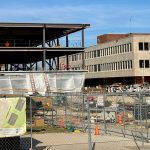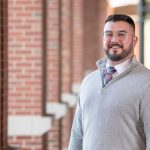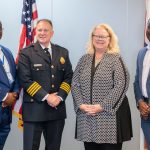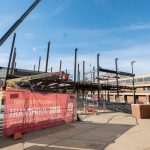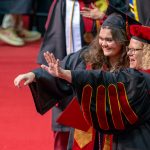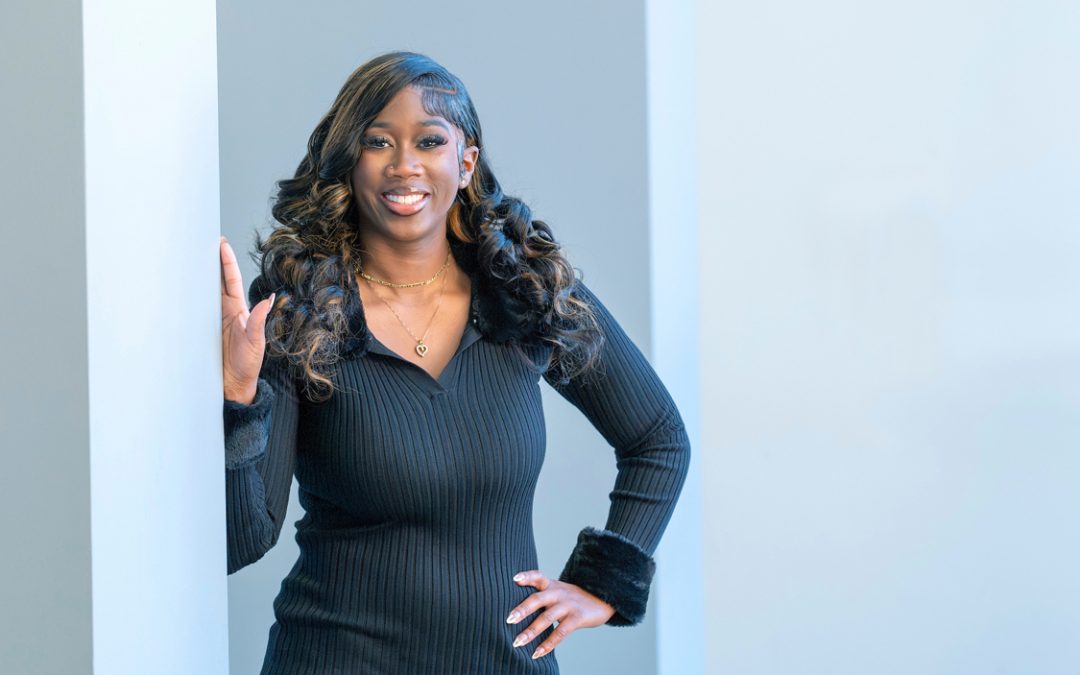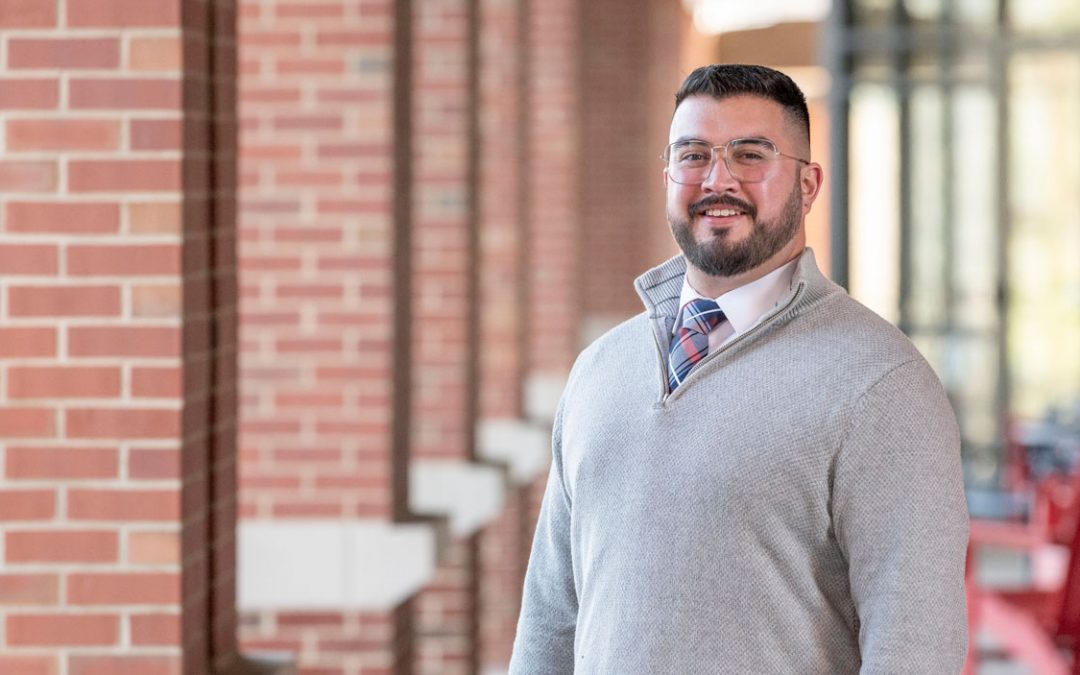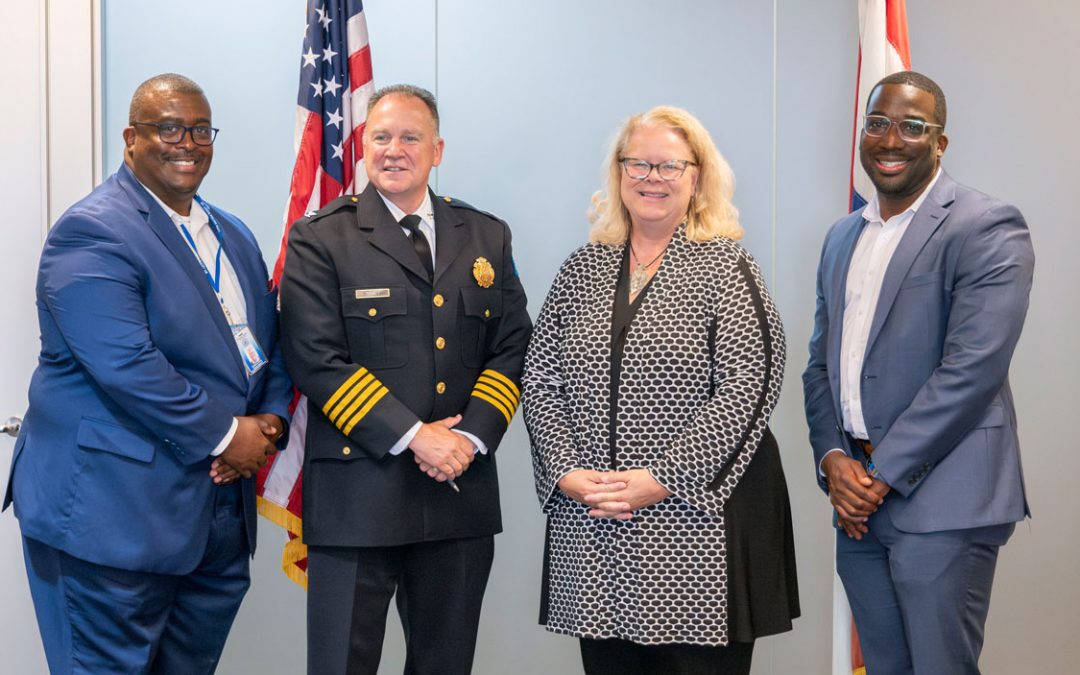
Chancellor Kristin Sobolik speaks to attendees at the Anchor Learning Network Action Summit on Tuesday in the Century Rooms of the Millennium Student Center as part of a presentation UMSL leaders gave on “Bringing the Anchor Mission to Life.” (Photos by Derik Holtmann)
Representatives of 22 higher education institutions from across the country came to St. Louis last week to take part in the Coalition of Urban and Metropolitan Universities’ two-day Anchor Learning Network Action Summit, hosted by the University of Missouri–St. Louis.
It was a chance to showcase efforts by UMSL and its partners in the St. Louis Anchor Action Network to promote greater prosperity across the St. Louis region by working to increase hiring and purchasing in 22 of the region’s ZIP codes that have faced prolonged periods of disinvestment.
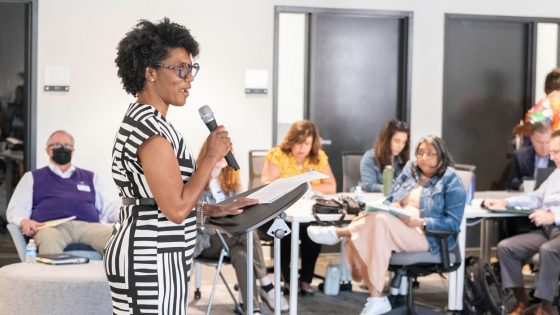
St. Louis Anchor Action Network Director Stefani Weeden-Smith welcomes out-of-town guests to the opening session of the Anchor Learning Network Action Summit last Monday at Refuge and Restoration Marketplace in Dellwood.
Attendees of the summit gleaned insights from informational sessions at both the Federal Reserve Bank of St. Louis and UMSL’s Millennium Student Center with a particular focus on the importance of data and metrics to support and advance the mission of anchor institutions as they make strategic investments in their areas to uplift their communities as they conduct business.
“The Anchor Learning Network is a year-long, cohort-based program that brings campuses together to network and learn from each other,” said Stacey Johnson, CUMU’s Director of Learning and Engagement, who leads the initiative. “Many of this year’s participants have been part of the ALN for years, committed to their institution’s work on economic inclusion, social and economic mobility, and other core values that CUMU members have in common.”
Those in attendance served in a variety of roles at institutions such as Case Western Reserve University, Sacramento State University, Swarthmore College, Towson University and the University of Central Florida.
They began the summit at Refuge and Restoration Marketplace on West Florissant Avenue in Dellwood, just north of Ferguson. The marketplace, which saw its first phase open last fall, sits on the site of a former Schnucks market and shopping plaza that sat vacant for more than 15 years. Pastors Ken and Beverly Jenkins purchased the property and have redeveloped it with entrepreneurial innovation and workforce development centers, a bank, a behavioral health clinic and the soon-to-open Bright Angels Academy early childhood education center. It is strategically positioned to spur economic growth and opportunity on one of the busiest sections of the West Florissant corridor.
“I feel so honored that you’re here to witness the revival and transformation that Refuge and Restoration has brought to our community,” St. Louis Anchor Action Network Director Stefani Weeden-Smith said last Monday morning as she welcomed out-of-town visitors to St. Louis and introduced them to the Jenkinses. “Their mission is to create socioeconomic change agents and help change our communities to become more sustainable and more equitable.”

Pastors Ken and Beverly Jenkins talk about their vision for Refuge and Restoration Marketplace with attendees of the Anchor Learning Network Action Summit.
The pastors have found support from several members of the St. Louis Anchor Action Network while building the marketplace — the second phase of which will include a home for their church that will double as a community gathering and event space, a commercial kitchen and a blackbox theater they hope can be used for productions by local theater companies.
“The community had a vision for this place long before we came about,” Beverly Jenkins said. “We just happened to walk into their vision and be the progenitors of what it is that they have asked for. We’re grateful that we can be a part of that story.”
It was intentional that the summit began in the community, giving attendees the chance to hear about the challenges that exist in St. Louis and the goals for a better future.
The summit shifted to the Federal Reserve Bank of St. Louis on Monday afternoon. Francois Henriquez, the executive vice president, chief administrative officer and general counsel, provided some opening remarks, before members of the Healthcare Anchor Network led a workshop on “Amplifying Anchor with Metrics.”
The rest of the afternoon included a presentation on “Challenges and Opportunities for Advancing Economic Security among U.S. Young Adults” and a discussion focused on making connections to the anchor mission strategic framework.
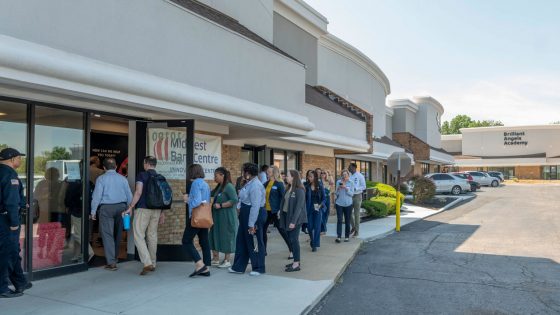
Attendees of the Anchor Learning Network Action Summit walk into a Midwest Bank Centre branch while touring Refuge and Restoration Marketplace in Dellwood.
The summit resumed Tuesday morning in the MSC Century Rooms at UMSL with a panel discussion on “Bringing the Anchor Mission Life.” UMSL Chief of Staff Adella Jones served as moderator while Chancellor Kristin Sobolik, Provost Steven Berberich and Vice Chancellors Chris Spilling and Tanisha Stevens took turns highlighting how the anchor mission has been embedded in the work of the university, including in the $110 million Transform UMSL initiative currently underway to reshape the campus.
Spilling noted how the university has sought out businesses from the surrounding community when contracting for different projects that are part of the overall initiative.
Berberich described other aspects of UMSL’s latest strategic plan that are focused on elevating economic opportunity in St. Louis, including the launch of a new Advanced Workforce Center last fall.
“Each of you live and breathe this at your institutions every day,” said Sobolik, who currently serves as the chair of CUMU’s Board of Directors. “But I want you to know that we learn so much from you, and I hope you can take away some of the things that we’re doing and provide advice as well.”
She stressed that the anchor mission has long been part of UMSL’s overall mission, and she expressed pride in the way the university has worked to spread that across St. Louis through its leadership of the St. Louis Anchor Action Network, which it helped launch in 2021.

Brillant Angels Academy early education Director Peaches Lott talks about the plans for the preschool at Refuge and Restoration Marketplace while giving a tour to attendees of the Anchor Learning Network Action Summit.
Later Tuesday morning, Heidi Ann Ward, the director of planning at the University of Pittsburgh, and Tatianna Pinto Swenda, the vice president and anchor strategies practice area leader at the summit’s title sponsor, U3 Advisors, led a workshop showcasing efforts to stimulate economic growth in several disinvested neighborhoods in Pittsburgh.
Weeden-Smith was glad to see so many similarities between their work and the efforts she’s helping facilitate in St. Louis.
“It really just helps to confirm that we’re on the right track,” she said. “We have our eye on the right types of things to continue to advance our goals.”
She was just as excited by the feedback she received from some of the attendees before they departed on Tuesday afternoon.
“I was so pleasantly surprised to see how many other universities across the country saw themselves in our story,” Weeden-Smith said. “They’re like, ‘You all are doing that? Then there’s the possibility for us to do this.’ They saw how we were addressing inequities, the ways to listen to community, to integrate community into how they do their anchor work.”



